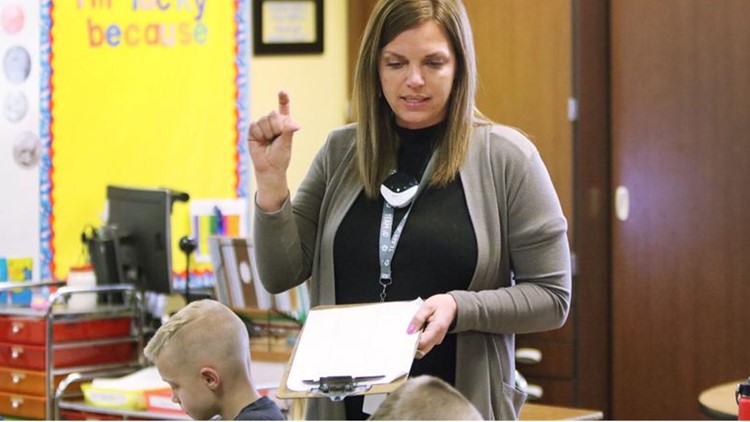BOISE, Idaho — This story was originally published in the Idaho Press.
Nearly three school years into juggling the effects of COVID, teachers have grappled with the constant protocol changes and well-being of students, all while taking care of themselves and their own families.
Kids are slowly adapting, they say, along with teachers — but it hasn’t been smooth sailing.
Two educators at Siena Elementary in Meridian have been accommodating to the changes while doing their best to make sure the children in their classrooms are adapting with them. It’s getting better, they said, but ever so slowly.
However, the effects of the pandemic made Jenny Arsenault, a second-grade teacher, feel like she wasn’t doing enough.
“I just felt like, gosh, am I doing a good job? I always felt like a really good, effective teacher. And then I just felt like I wasn’t effective,” Arsenault said. ”That was stressful for me to feel like I had no answers. I felt like I wasn’t doing a great job, but I was doing the best that I could.”
During the first portion of the pandemic, Arsenault was teaching kids solely online, and her only form of communication with parents was over the phone. Later on, she began teaching both in-person and online, which worried her more, as she was concerned about meeting the needs of every student.
“It was really like being a first-year teacher all over again,” she said.
Arsenault is also a parent, which meant she had to be focused on helping her kids at home while they learned remotely.
“I’m probably feeling the same pressures that parents felt — we’re trying to work, and we’re trying to educate our kids,” she said. “I was able to push through it and feel okay, but I also just felt like sometimes my hands were tied.”
Heide Fry, who teaches fifth grade, said this year of the pandemic almost felt worse than all the others. She had kids out with COVID nearly all the time, and it was hard to catch up once they were back in person.
“There is a lot of exhaustion, as it was a pretty steep learning curve,” she said. “Oftentimes when the kids come back, and they’ve missed several days, we then have those three or four kids that we’re trying to catch up. And then there’s three or four more that are absent and you’re teaching them online, and you have the other 28 kids that are with you (in person).”
Not only was it hard to deal with the constant absences in class, but young children missed out on huge socialization opportunities. Those who essentially grew up learning online are now participating fully in person and have some catching up to do, Fry said.
“We are definitely seeing an impact on their mental health,” she said.
Arsenault said the setbacks also apply to smaller things, like how to line up for recess and how to play with each other during breaks.
“They just missed out on a lot of those opportunities to be with peers. So that was kind of a big adjustment,” Arsenault said.
But, it’s getting better.
Fry said kids are adapting well.
“We’re catching a lot of kids seeing growth at a much higher rate than what we normally get. We’ll get them there,” she said.
Arsenault said in her class, the flexibility of the students is astounding.
“I think this generation is extremely flexible and understanding,” she said. Arsenault added that her students understand very well when she has to do something different than the plan she has in place, since they are used to change and adaptability.
They’re getting back to where they were slowly, she said.
“I’m hopeful,” she said. “We are all back, we are all here, ready.”
This article originally appeared in the Idaho Press, read more on IdahoPress.com.
Watch more Local News:
See the latest news from around the Treasure Valley and the Gem State in our YouTube playlist:



